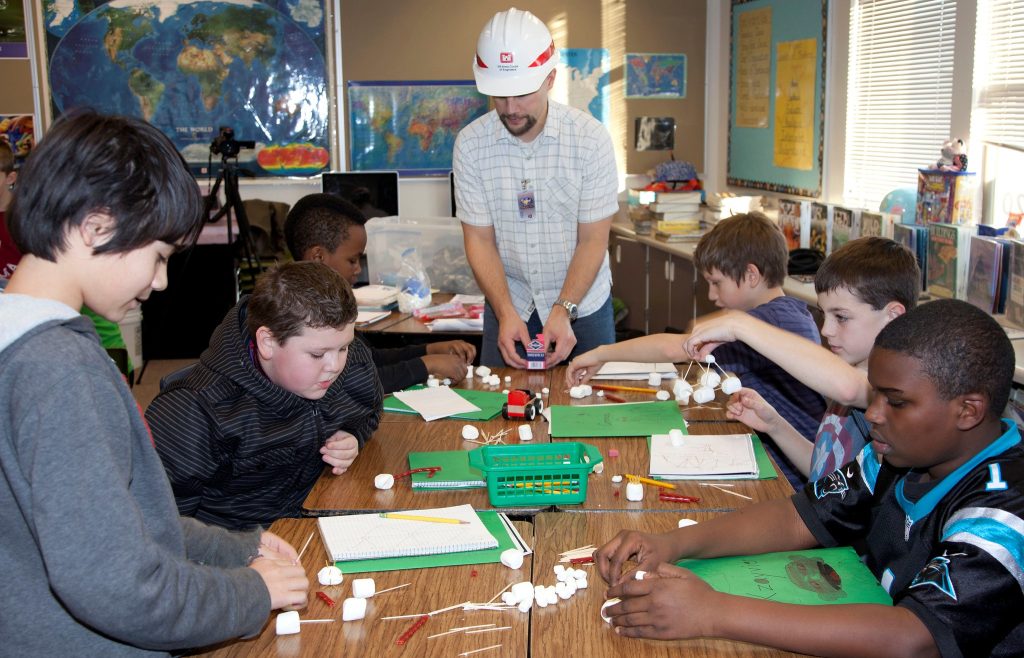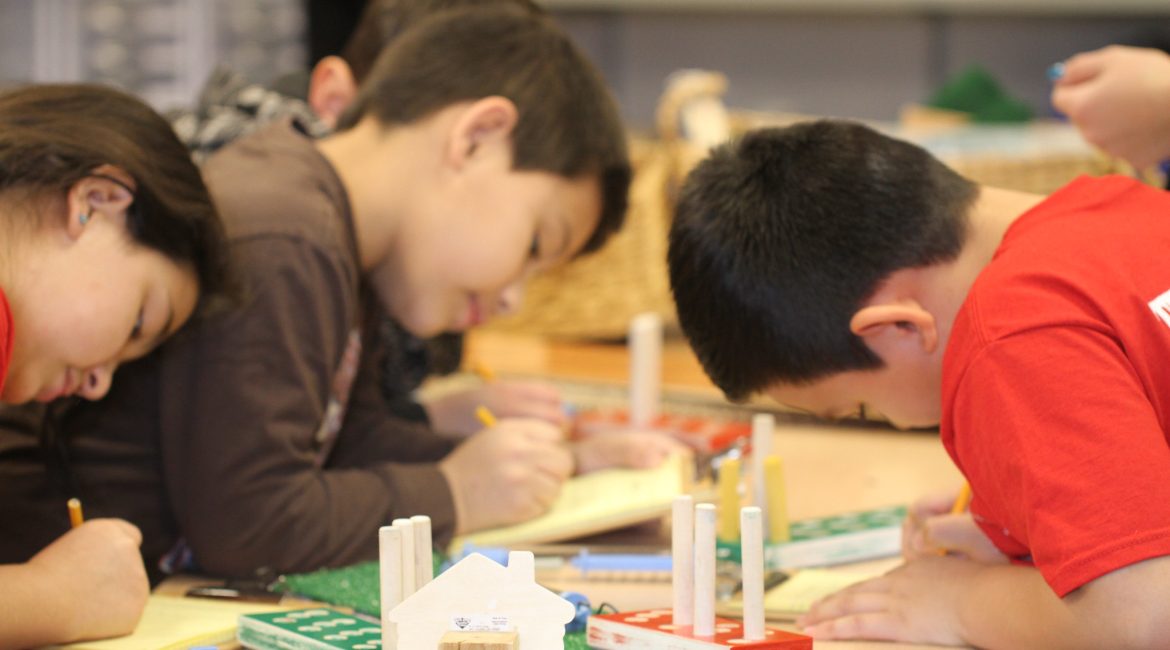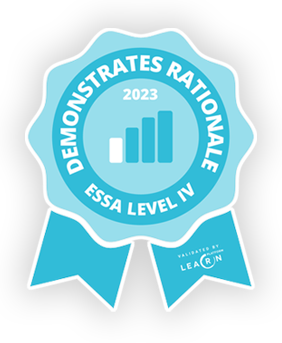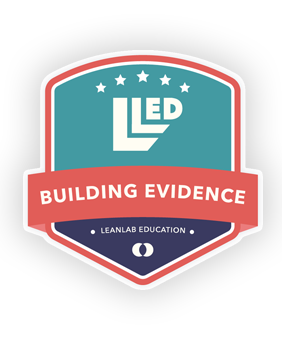STEM is a term that is thrown around a lot when it comes to educating the next generation. We hear how important it is for students to develop STEM skills in order to compete in the 21st century workforce. But, what are we talking about when we talk about a STEM education? What is STEM for kids? What does it look like for elementary level learning? What does it mean to get a STEM education? Why is it important? Are there cons to STEM?
Let’s take a look at these questions and more as we explore what STEM is for kids. In this guide, we will cover:
- What STEM is
- Why it is important
- How it can improve student learning
- Some cons of STEM education
- STEM activities and resources for kids
What Is STEM Education?
STEM is an acronym that stands for the four subjects: science, technology, engineering and mathematics. It was first coined by the National Science Foundation over 20 years ago with the purpose of improving learning within these subjects. STEM education though is more than just the sum of these four subjects. It is an approach to teaching these subjects that is focused on interdisciplinary learning designed to reflect real life. The subjects are integrated into classroom lessons that are project and inquiry-based, which creates a learning environment for asking questions and solving problems. In STEM education, these inquiries and projects are aimed at applying STEM proficiencies to come up with answers and solutions.
In real life, science, technology, engineering and math complement each other across disciplines. For example, when designing a building in the real world (meaning outside of a classroom setting) an architect uses science, technology, engineering and math not as separate subjects, but as integrated disciplines that work together to create the building design. STEM education is based on mirroring this real-world problem solving and project design within the classroom.
This approach to teaching STEM includes STEM standards designed to allow students to apply STEM proficiencies. These standards link STEM learning experiences so students can develop and apply their knowledge of STEM subjects and improve their understanding of STEM competencies. These standards also include benchmarks that seek to increase student interest in STEM and STEM-related careers.
The Importance of STEM Education for Kids
One reason a STEM education is important for kids is that according to the US Department of Labor’s Bureau of Labor Statistics, STEM related occupations are projected to grow up to 11% by 2031, almost twice as much as the total for non-STEM occupations. This projection makes STEM learning an important part of a student’s educational journey. It is also important for that journey to start in elementary school.
A STEM program for kids can get them developing skills early that will be needed to fill meaningful roles in the STEM workforce. STEM proficiencies are built over time. It takes study and practice to develop and improve them. Getting students engaged with STEM learning early in their educational journey is vital to establishing a strong STEM foundation. It is this foundation that a STEM education for kids is designed to accomplish.
STEM skills themselves can be classified in two broad categories, soft skills and hard skills.
Some of the hard skills developed with a STEM education include:
- Problem-solving
- Critical thinking
- Logical-mathematical
- Engineering design
- Analysis
- Scientific method application
Some soft skills include:
- Curiosity
- Creativity
- Communication
- Collaboration
- Perseverance and persistence
Another aspect of STEM’s importance is rooted in promoting 21st century skills, or the four C’s:
- Critical thinking
- Creativity
- Collaboration
- Communication
These skills are considered vital for students to develop in order to be successful in the 21st century workforce. It is noticeable that there is a cross-over with some of STEM’s skills and the 4 C’s. This crossover is where the importance of a STEM education is most vital.

How STEM Can Improve Student Learning
STEM learning for kids can improve their overall learning by activating their critical thinking skills as well as their creativity, communication and collaboration. These 4 C’s, as outlined above, are essential in helping students learn how to learn. It is this skill, above any others, that prepares students for 21st century career pathways.
Technology continues to grow and change faster than students can be trained to apply it to any number of different jobs. These jobs are also difficult to predict. The necessary technical skills that are needed today may be different than what is needed in only a few short years. The world is moving at an ever-faster pace and that means the specific skills necessary for any given job are changing faster too. The importance of developing 21st century skills is to develop the ability to continue learning to keep pace with the specific skills needed for a changing workforce.
By improving a student’s ability to learn and apply their knowledge to given problems and circumstances that reflect the real world, a STEM education supports students in successfully navigating an ever-changing world.
STEM basics within the K-5 classroom are centered on helping students better understand the world around them. Students learn the technical skills and competencies within STEM subjects at age-appropriate levels, but they also learn to solve problems, think critically, communicate with each other and work together. Applying critical thinking and communication skills within the STEM centered classroom creates a learning environment rich in exploration and inquiry. This environment is designed to engage students in learning. It is that engagement that helps improve student learning overall.
Some of the Cons of STEM Education
Not every education method is all good for all kids and types of learners. Every method has a downside. When we are looking at STEM for kids, especially early learners, STEM instructions need to meet students where they are at and open the world to further learning and understanding. Creating a learning environment that engages students in learning is key to any educational approach, STEM included.
STEM education was originally designed to improve learning within STEM subjects so more students could develop the skills and competencies necessary to enter STEM fields. This was seen as necessary for the US economy to remain competitive. This workforce driver could be seen as a con of STEM as it is propelled by economic reasons and not necessarily what is best for young learners. STEM education has continued to develop, however, over the last 20 years. Incorporating the arts, reading, and writing has brought a stronger whole-child approach to STEM programs and these developments have made the STEM approach to learning more accessible to different types of learners.
STEM Activities and Resources for Kids
Teaching STEM can be rewarding, especially if you find STEM activities for your students that can make learning both fun and educational. STEM activities cover a STEM concept through hands-on learning and problem-solving. The key to these activities is to meet the students where they are at and to challenge them in fun and interesting ways. Some of the best activities incorporate the use of themes or objects that the students are already familiar with. This allows them to have a grounding within the activity with something they already have a connection to.
Most STEM activities can be done in small groups. This also increases the skill building nature of the activity to incorporate collaboration and communication. With the need to work together to complete the activity students are more apt to organically work on these soft skills. Group dynamics usually help foster them naturally, but sometimes students do need some coaching on these skills as well. Older students may even enjoy the activities as a competitive game. Adding a time element to see which group can complete the activity the fastest can add that competitive edge.
Fun STEM Activities for Kids
Pouring a Rainbow
With a simple, everyday clear mason jar, students explore the weight density of different substances and how they interact with each other. Gather up some everyday materials, honey, light corn syrup, green dish soap, olive oil, rubbing alcohol, water, food coloring, and a dropper. First, introduce your students to the concept of density. This understanding is the underpinning of the activity. Color the corn syrup purple, the water blue and the rubbing alcohol red. Pour each substance in the middle of the jar, being careful not to touch the sides. Until you get to the red rubbing alcohol. Using the dropper, drop it along the sides, so it does not break through to the oil layer and into the water, which will ruin the rainbow effect. Have students observe the rainbow they have poured into a jar.
Fun with Coding
There are a lot of fun activities that can teach students coding basics. You can create a simple decoder and have students decode messages or make it a mystery solving game centered on a theme, such as superheroes, or pet detectives, or dragon slayers. You can even teach kids binary code basics by having them create their name in binary code. The key is to have any entry point into the activity that makes it fun and engaging.
Building Structures with Everyday Objects
Challenge students’ engineering skills with building activities that use everyday items. Build structures with marshmallows and pretzels or straws and tape. You can use plastic cups and craft sticks to create structures with narrow bases, or the tallest they can get to stand, or one that plays with balance and weight. For an extra challenge for older elementary students, try using everyday objects to create a bridge that will hold the weight of a certain object, or a rollercoaster or a chain reaction.
Bring in Expanded Ways to Present STEM Lessons
Inspiring students through expanding methods of covering STEM concepts and lessons can help support student learning. Resources like Livestream Learning Studio, where students are creatively engaged to explore STEM subjects, can be a fund and innovative way to engage young learners.
Some other useful STEM resources for kids can be found on the Internet, but it is important to vet these resources for accuracy, quality and safety. Bringing vetted STEM focused learning platforms into your classroom, like Livestream Learning Studio, can help cover STEM principles at the elementary level with a fun, creative approach that engages students and inspires them to continue their STEM learning.
Final Thoughts on STEM Education
STEM education is more than a term to throw around when talking about educating the next generation. It is an approach that is steeped in connecting STEM subjects in an integrated study that reflects the real world. By developing STEM proficiencies along with the hard and soft skills that coincide with 21st century skills geared for a 21st century workforce, STEM education teaches students to learn how to learn. This above all is the most important skill that students can take with them for the rest of their lives, no matter what career they may pursue.





